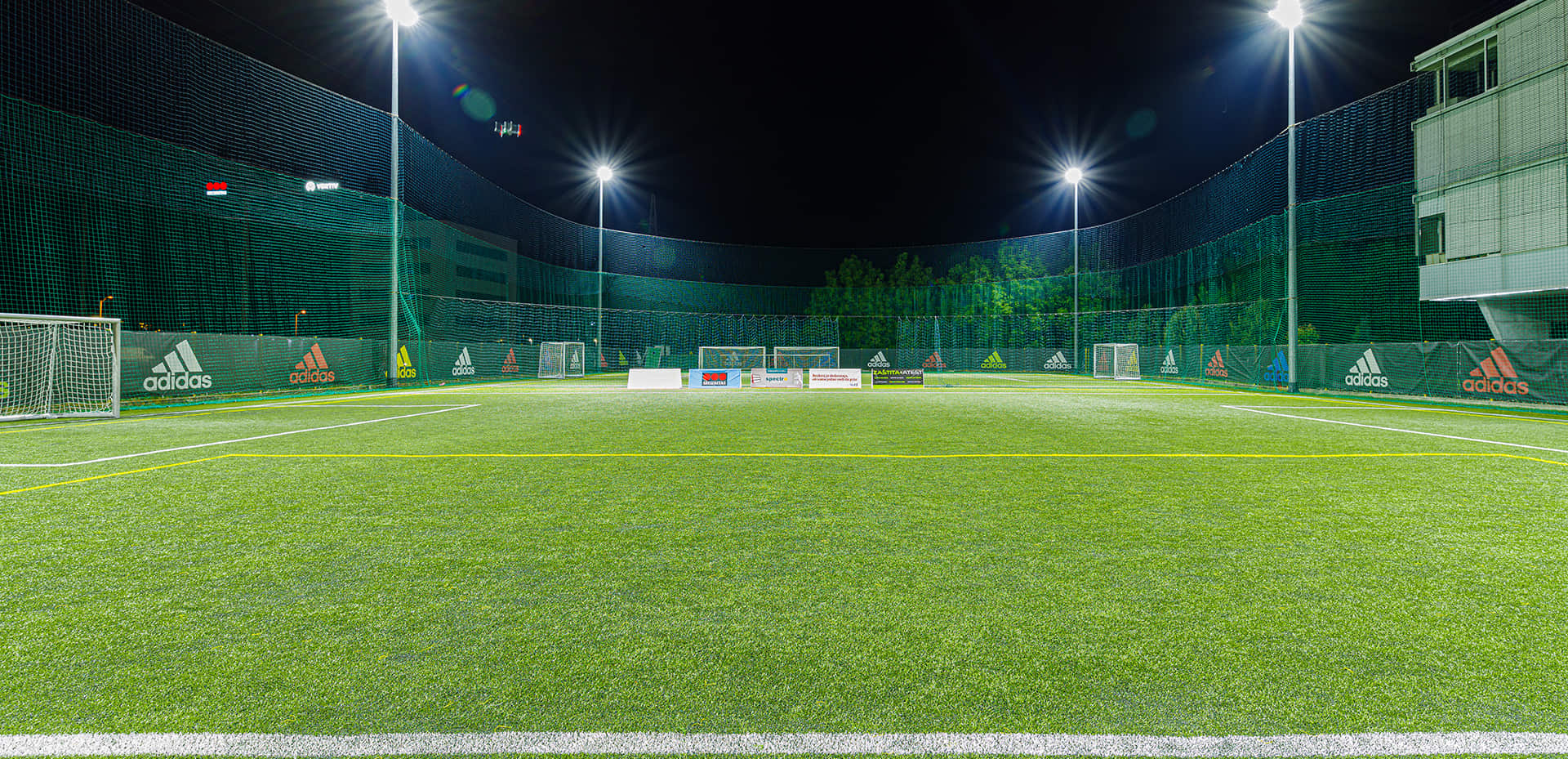- Home
- Products
- Topics
- Applications
 From industrial to outdoor lighting, AGC lighting have worked with a number of different customers around the world.View All Case Studies
From industrial to outdoor lighting, AGC lighting have worked with a number of different customers around the world.View All Case Studies - Sustainability
- Blog
- Resources
- Contact
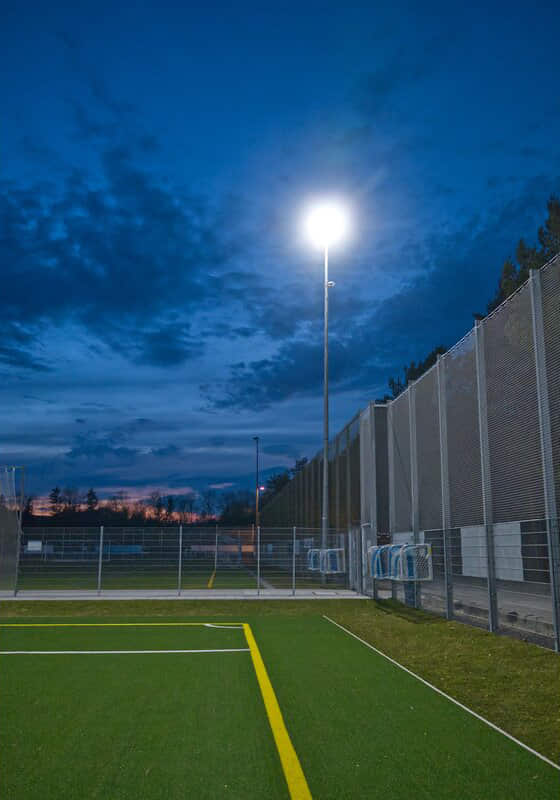
In the late 19th century, football matches were held during the day as suitable lighting to illuminate fields at night was lacking. With football's rising popularity, demand grew for night matches, prompting innovations in lighting. Open flames gave way to electric lights. Now, LED sports lighting is mainstream.
Modern football lighting employs high-power LED fixtures to provide ample, uniform illumination across the entire field for optimal visibility. Lighting design considers field size, fixture placement, pole layout height, and adheres to standards for illuminance, glare, and light pollution. Fixture selection factors involve luminous flux, beam distribution, size, and light shields. Installation, maintenance and intelligent controls are also key considerations for quality football field lighting.
Quality lighting is crucial for successful sports events. The European Standard EN12193 provides guidelines and requirements to ensure optimal lighting conditions for sports. Proper sports lighting benefits players by promoting safety and maximizing ability. It also enhances the experience for spectators and TV broadcasts.
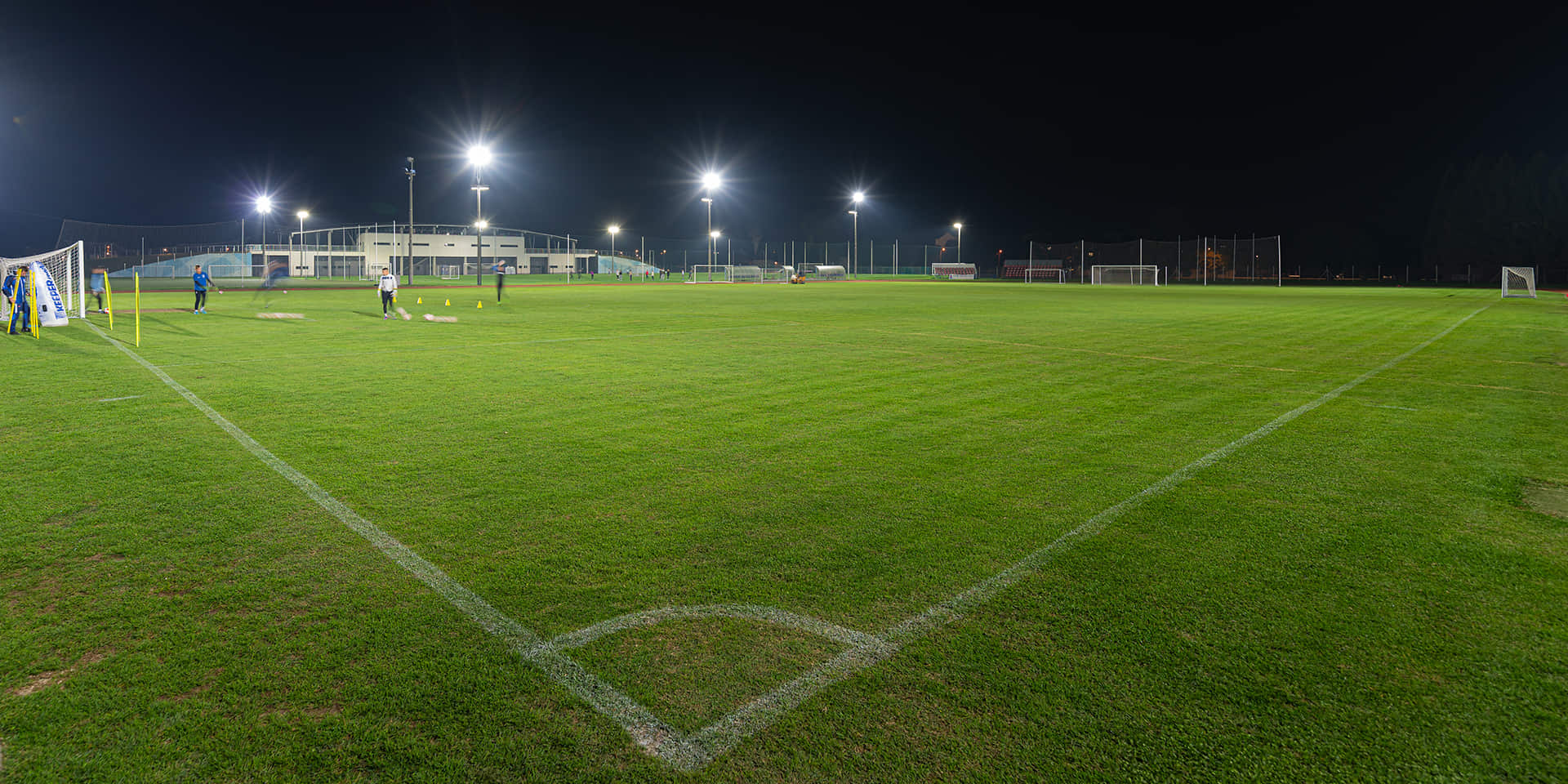
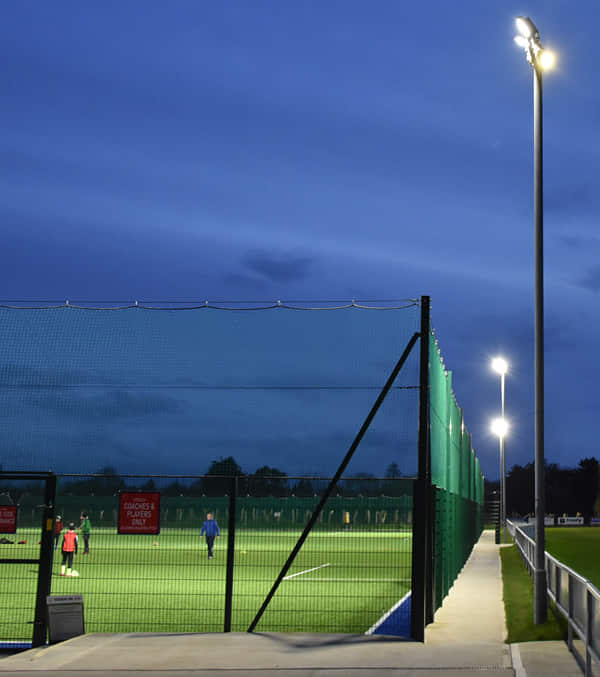
The size of a football field determines its lighting requirements. Different sizes of fields need different numbers and types of light fixtures to achieve the optimal lighting level for the players and spectators. Larger fields usually need more light fixtures and higher wattage than smaller fields to cover the whole area with sufficient brightness.
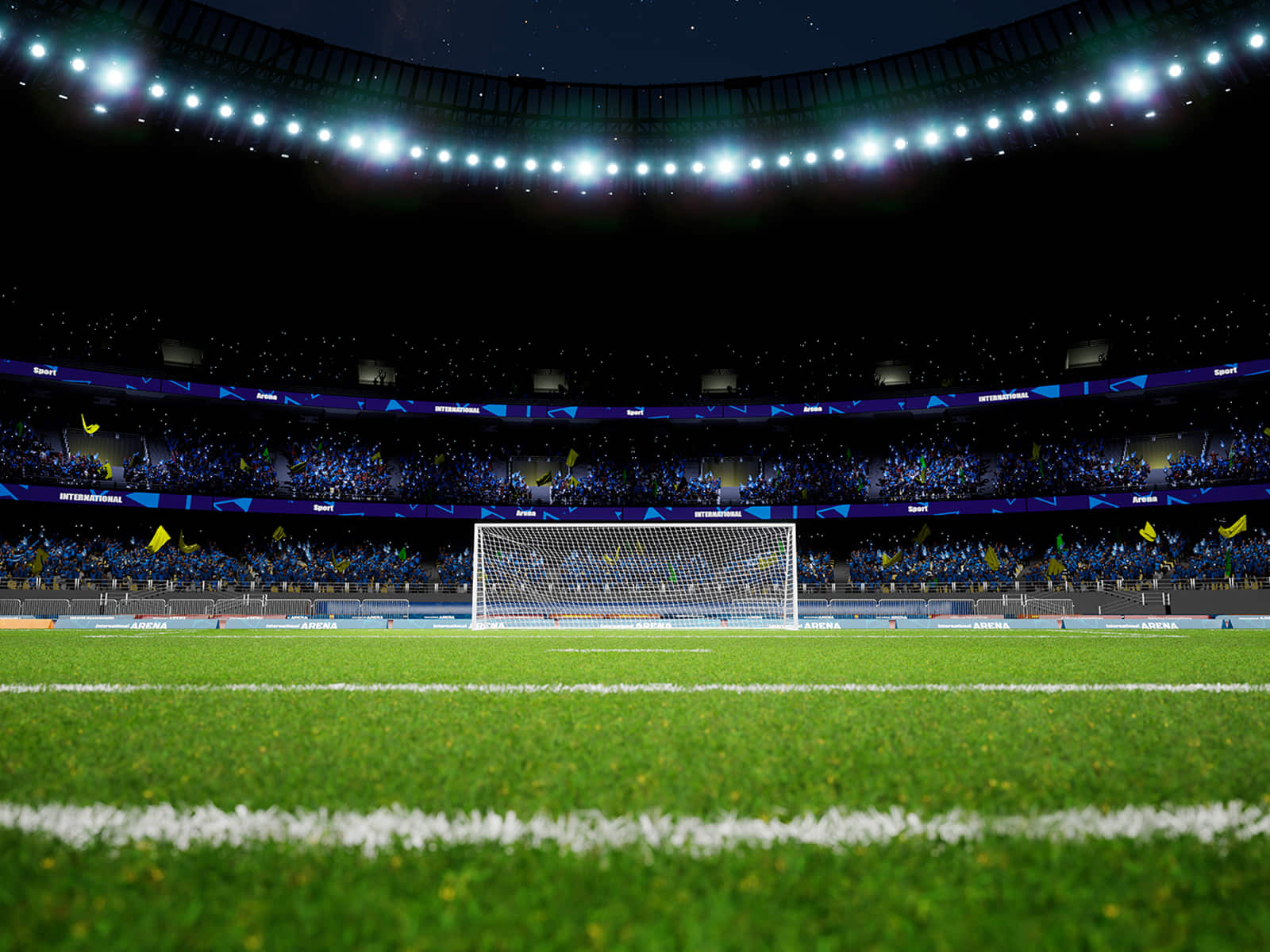
The dimensions of a standard field are 105 meters in length and 68 meters in width, with sideline lengths ranging from 100 to 110 meters and goal line lengths ranging from 64 to 75 meters. For such a field, the lighting system should provide an average illuminance of approximately 500-1000 lux, with a minimum illuminance not lower than 200 lux.
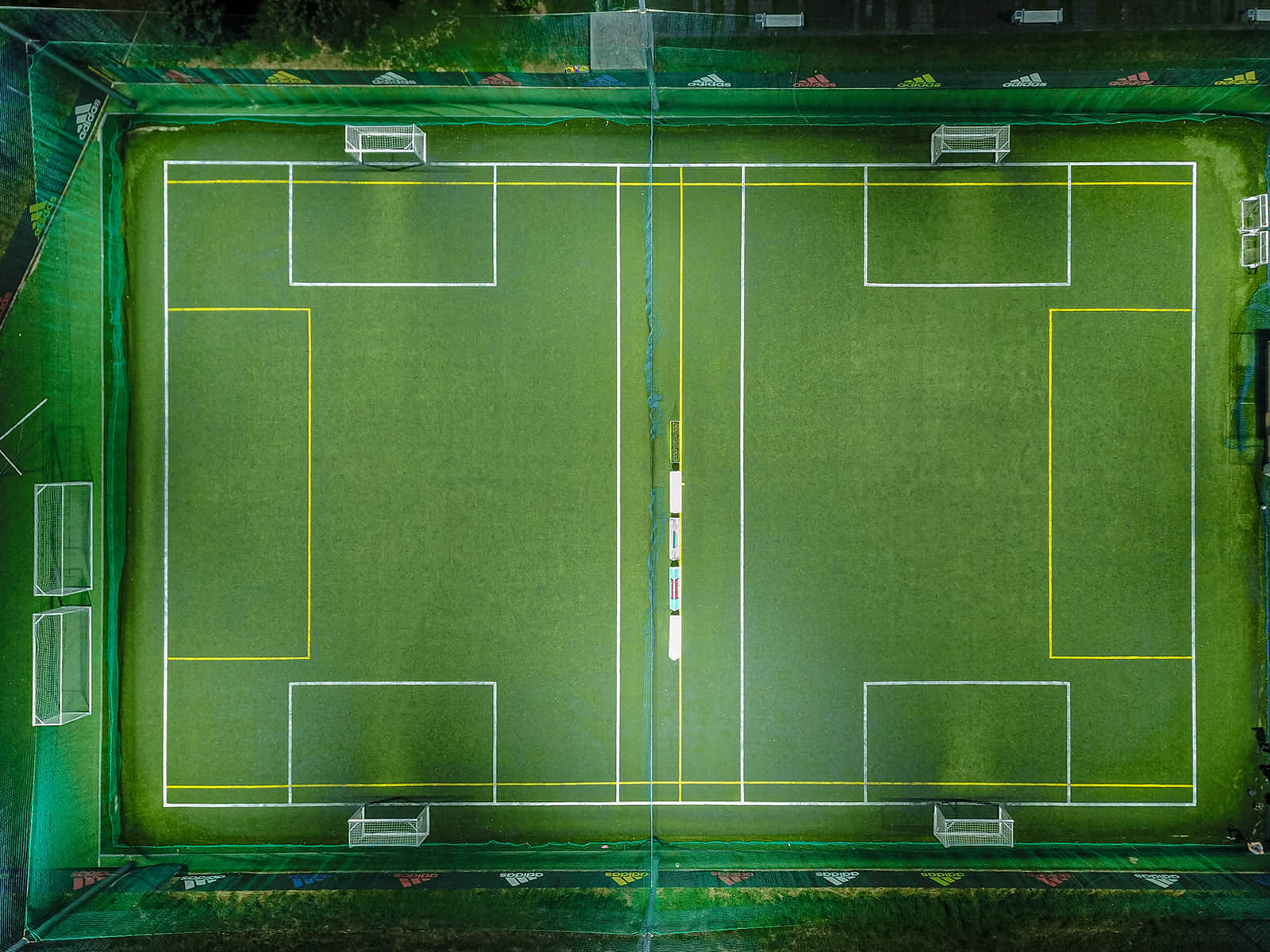
The dimensions of a small or middle size field can be adjusted as needed, but typically do not exceed 50 meters in length and 30 meters in width. For such a field, the lighting system should provide an average illuminance of approximately 200-500 lux, with a minimum illuminance not lower than 100 lux.
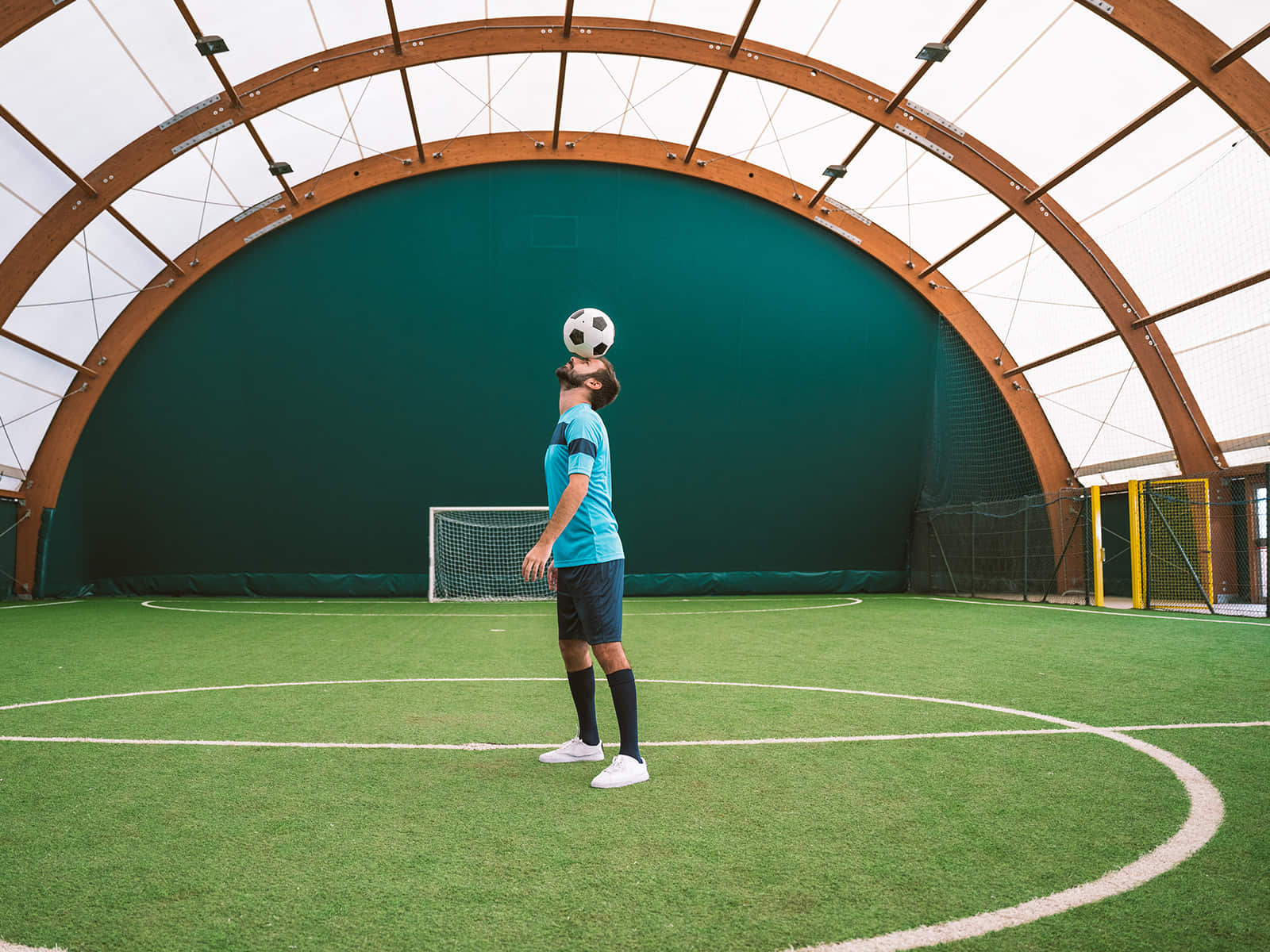
The dimensions and shape of an indoor football pitch can be adjusted as needed, but generally require similar illuminance levels to a standard stadium. For such a pitch, the lighting system should provide an average illuminance of approximately 500-1000 lux, with a minimum illuminance not lower than 200 lux.
Whether it is a professional stadium with stands or an amateur field, the quantity and layout of lighting fixtures need to be determined based on the size, shape, and illuminance requirements of the field. When planning the arrangement of the fixtures, it is important to avoid glare and shadows in order to achieve uniform illuminance. Additionally, direct lighting towards the spectators' eyes should be avoided to ensure an optimal viewing experience.
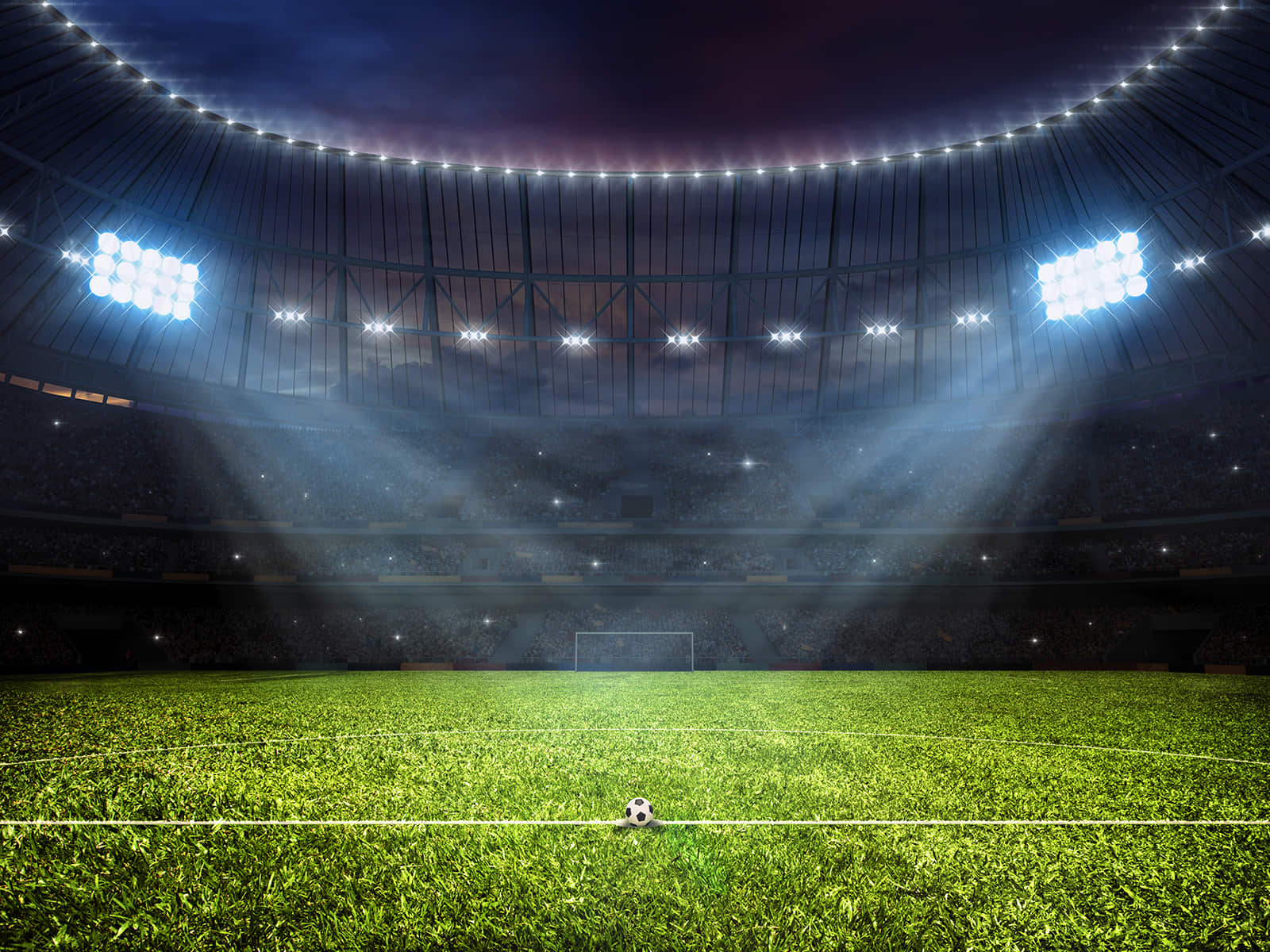
For professional stadiums with stands, the lighting fixtures are usually located around the perimeter of the field or at the top of the stands. In order to achieve sufficient illuminance levels, elevated light poles or suspended fixtures are commonly used to project light onto the field. The number and layout of the light poles and fixtures need to be determined based on the size and shape of the field to achieve uniform lighting.
For amateur fields, the lighting fixtures are usually located on low poles around the field, or high-rise poles are set up at both ends of the field.
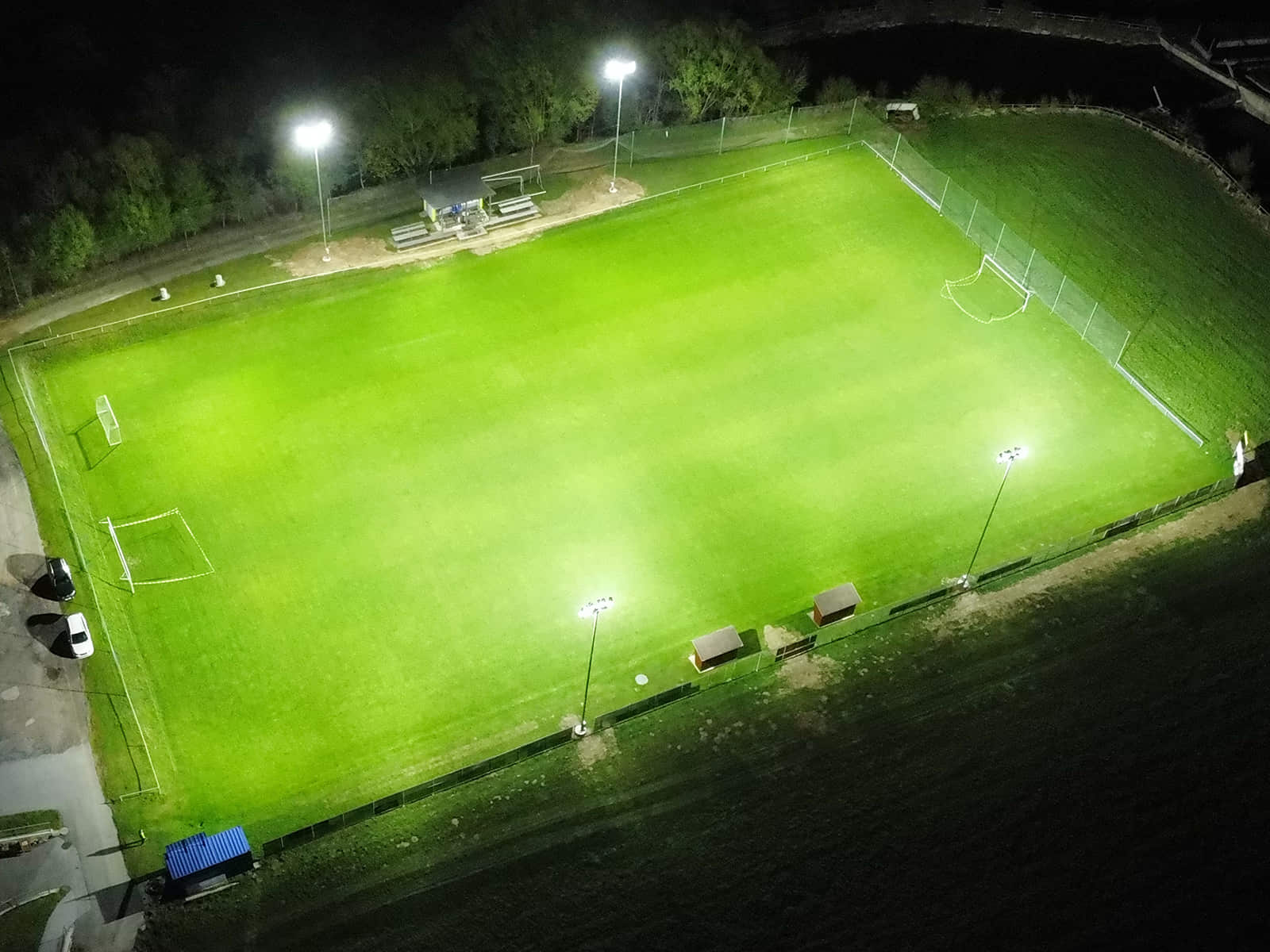
To ensure uniform illumination, it is crucial to carefully consider the layout and height of light poles, particularly in professional sports events.
For a four-pole light pole layout, there will be a pole at each corner, typically ranging in height from 15 to 20 meters. This layout can provide relatively uniform illumination but may create some shadows and spots of light. When selecting lighting fixtures, ones with a larger beam angle should be chosen to ensure sufficient illumination and uniform lighting.
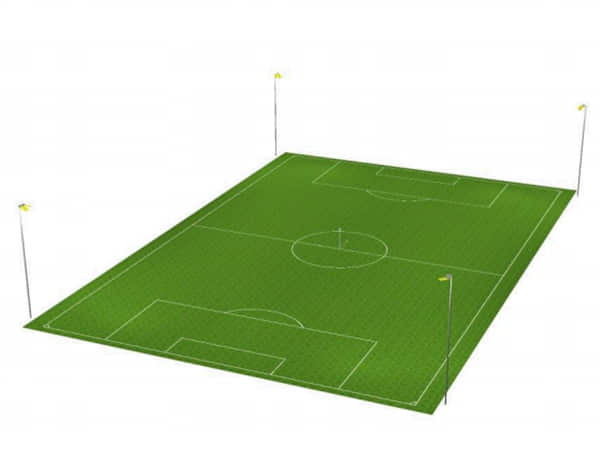
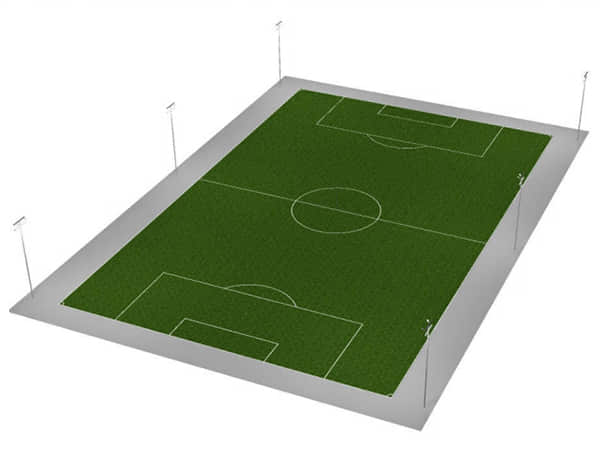
For a six-pole light pole layout, there will be a pole at each corner and in the central position, typically ranging in height from 15 to 25 meters. This layout can provide more uniform illumination but requires more poles and lighting fixtures. When selecting fixtures, ones with a smaller beam angle should be chosen to ensure more precise lighting with fewer spots and shadows.
The height of the poles also affects the selection of lighting fixtures. Taller poles usually require higher-power lighting fixtures to achieve sufficient levels of illumination. Lower poles can be paired with lower-power fixtures to reduce energy consumption and costs. Additionally, the height of the poles also impacts the installation position and angle of the lighting fixture, which need to be adjusted based on specific circumstances to achieve the best lighting effect.
The European Committee for Standardization has established a norm for sports lighting applications: the European Standard EN 12193. Its purpose is to enable good quality sports lighting through recommendations and requirements.
National and international matches, which generally involve large spectator capacities with potentially long viewing distances, may be included in this class. Top-level training may also be included.
Regional or local club matches, which generally involve medium-sized spectator capacities with medium viewing distances, may be included in this class. High-level training may also be included.
Local or small matches, which usually do not involve spectators, may come into this class. General training and recreation also come into this class.
| Class | I | II | III |
|---|---|---|---|
| International/National | • | ||
| Regional | • | • | |
| Local | • | • | • |
| Training | • | • | |
| Recreational | • |
| Class | I | II | III |
|---|---|---|---|
| luminance | 500lx | 200lx | 75lx |
| Uniformity | 0.7 | 0.6 | 0.5 |
| GR | 50 | 50 | 55 |
| Ra | 60 | 60 | 20 |
To achieve optimal lighting in football fields, factors such as uniformity, color temperature and color rendering, appropriate illuminance levels, glare control, energy efficiency, reflection and diffusion, need to be considered. Excellent lighting effects can be achieved on football fields, providing a great lighting experience for players and spectators.
Lighting in football fields should provide uniform distribution of light, avoiding shadows, uneven lighting, or spots. This can be achieved through proper placement of luminaires and lighting design to ensure the entire area is appropriately illuminated.
Choosing the appropriate color temperature can create a better atmosphere for matches. Typically, football fields lean towards higher color temperatures, such as 5000K-6500K, to achieve clear and vibrant lighting effects.

Modern sports stadium lighting systems often have adjustable brightness capabilities to accommodate different match or training requirements. Considering energy consumption and environmental protection, the use of efficient and energy-saving LED luminaires is recommended.
Good lighting effects also consider the reflective properties of interior surfaces in the stadium. Choosing appropriate materials and colors, as well as implementing proper diffusion techniques, can enhance light utilization, reduce light loss, and minimize light leakage.
Upward light ratio (ULR) generally, glare ratio (GR) for players and luminous intensity (LI), obtrusive light for neighbors are becoming increasingly important considerations for sports lighting designs in developed countries. The parameters above are not the same but they are inter-related, therefore design improvements that achieve a low ULR will usually achieve a good GR and LI, so we can concentrate on minimize the ULR in priority.
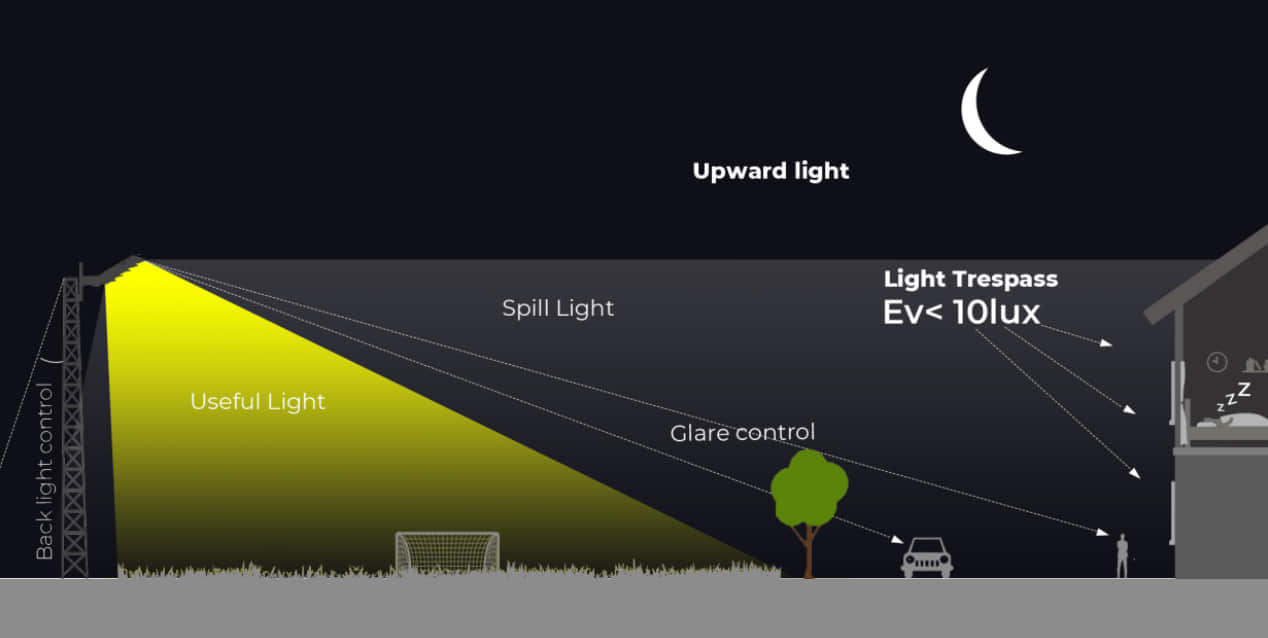
The lighting in football fields needs to provide sufficient illuminance to ensure that spectators, athletes, and referees can see the game clearly. Illuminance may vary based on different competition levels, so adjustments should be made based on specific circumstances.
Colour rendering (also called Ra) describes the capacity of a light source to faithfully reveal and reproduce the natural colors. In general broadcasters want to create vivid colour rich images, which come from light sources having ‘good’ colour rendering (≥ Ra 80).
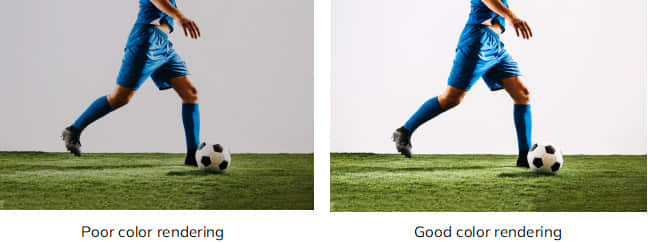
If the football field frequently hosts televised matches, attention should be given to avoiding flickering lights to ensure smooth filming by television cameras.
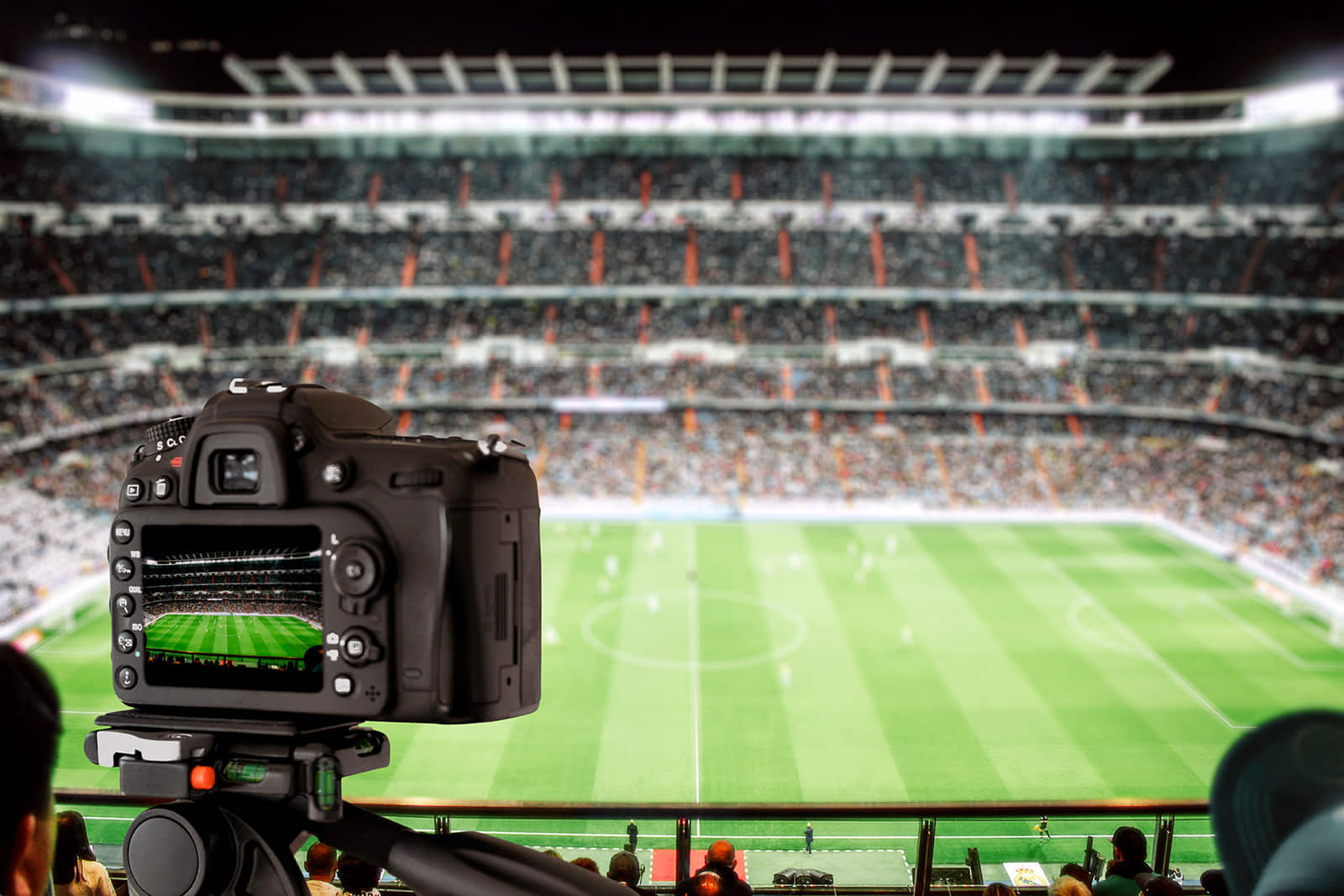
Check the Lighting Solution for TV Broadcasting Sports Stadium
When it comes to lighting selection for a football stadium, several factors need to be considered to ensure optimal visibility and performance. Lighting calculation is the primary and crucial step in outdoor sports lighting.
The majority of existing HID lights in European football stadiums are Philips MVP507 2000W HID lights. Generally, 1000-1200W LED lights can directly replace the Philips MVP507 2000W HID light on a one-to-one basis. The power of the LED lights can be adjusted according to the specific project requirements, including the number of lights and the desired lighting level. Sometimes, selecting football lighting based on effective luminous flux can be more accurate.

In general, lighting distribution can be divided into symmetrical and asymmetrical distribution. The narrower the beam angle, the smaller the coverage area, but the higher the light intensity and the longer the illumination distance. Conversely, the wider the beam angle, the larger the coverage area, but the lower the light intensity and the shorter the illumination distance. Lighting distribution has a significant impact on illuminance and uniformity. For large football stadiums hosting international and professional matches, it is necessary to choose narrow or very narrow beam angles, combined with an appropriate number of wide beam angles. However, for amateur or recreational sports venues, wide beam angles or asymmetrical beam angles are sufficient.
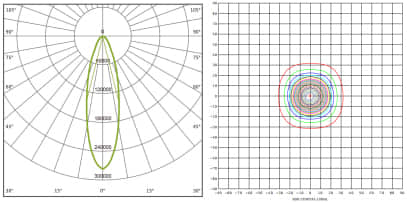
F19804
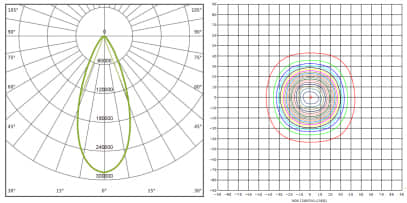
F19805
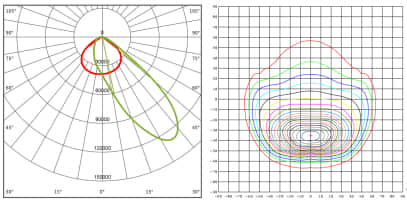
F19802
When performing lighting calculations, it is necessary to adjust the elevation angle of the luminaire. The larger the elevation angle, the larger the visible luminous surface, resulting in more glare, spill light, and upward light outside the site, and a greater impact on the surrounding environment.


When using the same luminaire to illuminate the same area, the elevation angle will be larger if you install the luminaire on a lower pole. At AGC, we have developed asymmetric light distributions with a larger γ angle, which can achieve good lighting performance with less pollution, even when the luminaire is installed on a relatively low pole.
Luminaire size and weight are related to EPA (Effective Projected Area) requirements for lighting poles.
In general, engineering projects evaluate the size and weight of luminaires, which is related to the selection of lighting poles. Luminaires with smaller dimensions and lighter weight have advantages, as they can reduce the cost of the pole accordingly.
EPA refers to the total surface area of the lighting fixtures that a pole can support at a given wind speed. In sports lighting, EPA is a method to measure the strength of the lighting pole. It is well known that wind can affect almost anything. Therefore, engineers or LED lighting manufacturers use EPA to determine the force that wind will exert on the structure. This value, combined with the net weight of the luminaire, is used to determine installation requirements and assist in selecting the correct lighting pole, installation height, installation method, etc. Higher wind speeds require relatively lower EPA. Therefore, in areas with strong winds, smaller-sized luminaires are needed. EPA measures the three-dimensional aspect of luminaires on a two-dimensional area (see the diagram below).
Although LED luminaires have better directionality and better control over light pollution compared to traditional HID luminaires, there will inevitably be some light intrusion into surrounding or distant residential areas, as well as scattered light reaching the sky. AGC's sport lights can be equipped with visor to control back spill or upward light, minimizing light pollution.
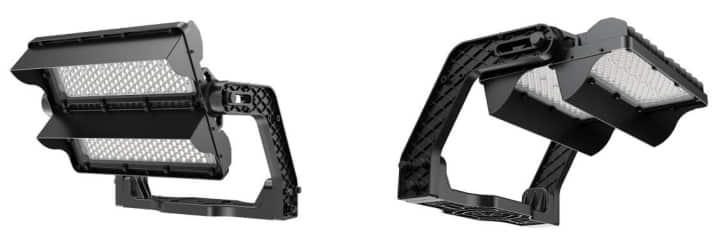
After customers purchase AGC sports lighting fixtures, in order to provide customers with more accurate information about the horizontal angle, elevation angle, and corresponding illumination points of each fixture during actual installation, AGC's optical department will summarize all the information that needs to be referenced during fixture installation based on the lighting simulation report. This guide document is provided to assist with on-site installation.
The compass in the upper left corner indicates the orientation, which helps customers identify the positions of each lighting pole and achieve precise positioning during actual installation.
As shown in the lower left corner, each lighting pole and fixture are identified with corresponding codes, indicating the length of the lighting pole, and different colors are used to differentiate the fixtures.
As shown in the lower right corner, the coordinates (X, Y) of each illumination point corresponding to the serial number of each fixture are detailed in the table.
As shown in the upper right corner, the model, wattage, CCT, CRI, beam distribution, and quantity of the fixtures are displayed one by one and identified with different colors for better differentiation.
The coordinate system is established with the bottom left corner of the site as the origin (0, 0). Based on the illumination point table and the coordinate scale, each fixture on each lighting pole can be located on the site. The end points of the projection lines from the fixtures indicate their respective horizontal angles, elevation angles or depression angles, and fixture heights.
Without an aiming device, the fixture can be adjusted according to the (horizontal angle, elevation angle/depression angle, fixture height). The elevation angle and depression angle of the fixture are adjusted using the scale dial on the bracket, while the horizontal angle of the fixture is adjusted by rotating the bracket.
When configuring an aiming device, before actual installation, reference lines need to be drawn based on the site coordinate scale, and retroreflective cones or markers should be placed at each illumination point. This facilitates more efficient aiming of the illumination points during precise adjustment on the lighting pole using the aiming device.
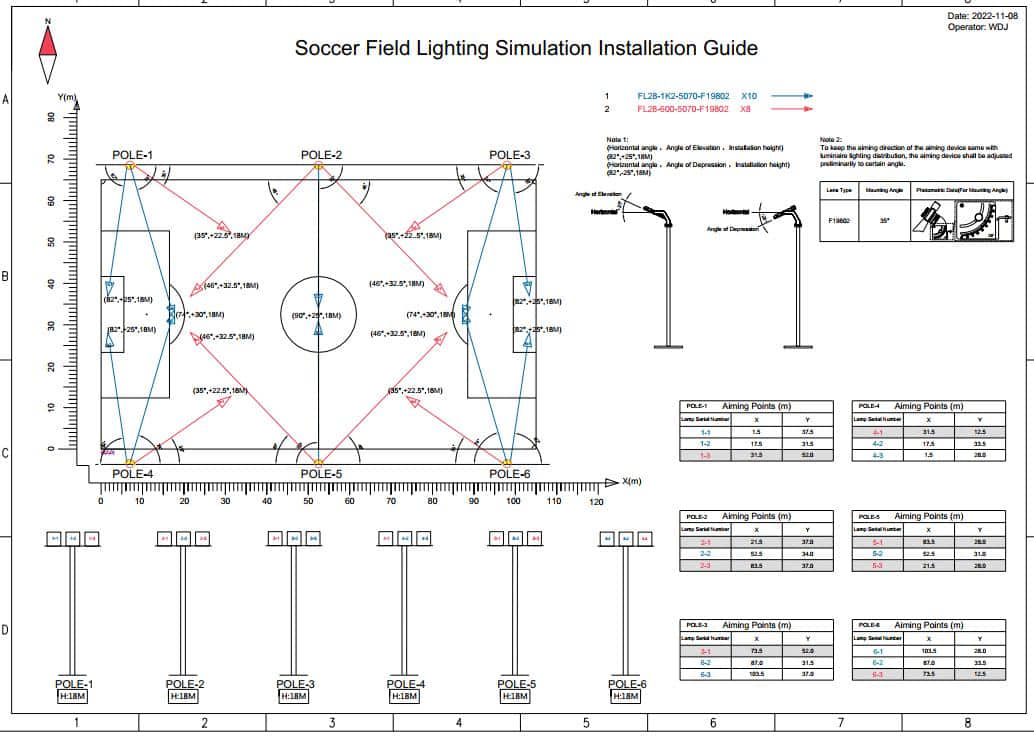
Aiming devices play a crucial role in the installation of sports lighting, as they are primarily used to ensure the accuracy of fixture installation and illumination direction. Aiming devices can ensure the precise positioning and orientation of the fixtures, thereby achieving optimal lighting effects. By utilizing aiming devices, the scattering of light and light pollution can be minimized.
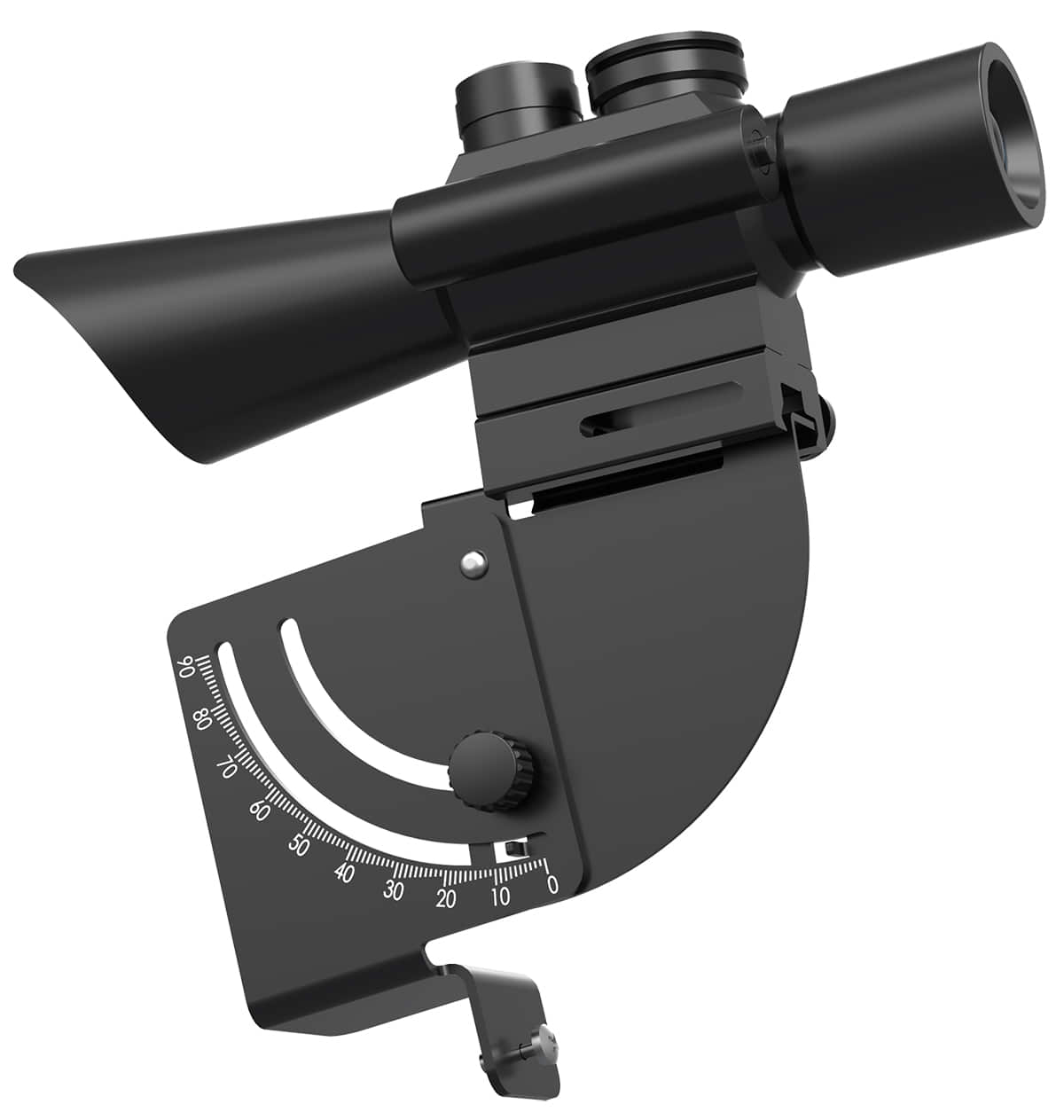
The aiming device is typically installed on the top or side of the radiator, and the specific installation angle to which the sight should be adjusted is determined based on the angles provided in the product manual.
During the installation of the aiming device, it is crucial to ensure that the aiming angle of the aiming device matches the corresponding lighting distribution of the fixture. By referring to the corresponding table between the lighting distribution the fixture and the aiming angle of the aiming device (e.g., FL28 LED Flood Light, refer to the table), you can determine the appropriate aiming angle of the aiming device.
Once the aiming device has been adjusted to the aiming angle and installed, please refrain from touching or readjusting it to maintain precise alignment and accuracy of the aiming device.

There are several factors to be considered for the selection of cable material and wire gauge of sport lighting to ensure the safety, reliability, and stability of the electrical system. Here are some common factors:
Different power ratings of sports lighting fixtures require different current loads. Therefore, it is necessary to select an appropriate wire gauge and cable material.
Sports stadiums often require protective measures for lighting fixtures. Similarly, the cable selection needs to match the corresponding protection to ensure electrical safety and reliability.
Cable selection may vary based on different national and regional standards and regulations. It is essential to consider and comply with local standards and regulations.
Longer circuit lengths result in increased wire resistance. To ensure stable current transmission, it is essential to choose adequately thick wires to reduce circuit resistance.
Cable materials include copper, aluminum, and others. Copper cables have high conductivity and low resistance but are relatively expensive. Aluminum cables are cost-effective but have lower conductivity. The appropriate material should be selected, with copper being commonly used nowadays.
Outdoor sports lighting installations require wire materials with good weather resistance to prevent aging, cracking, oxidation, and corrosion.
If the wiring needs to be buried underground, cable materials with excellent pressure resistance and corrosion resistance should be chosen.
Wire is usually composed of copper + insulation layer + outer sheath. There are various types of outer sheath materials for sports lighting wires, each with its own advantages and disadvantages.
AGC commonly uses PVC (polyvinyl chloride) rubber, which has good pressure resistance. If there are environmental protection requirements, NHFR (non-halogen flame retardant environmentally friendly material) can be chosen. This is an environmentally friendly cable material that has characteristics such as low smoke, non-halogen, and flame retardancy. It reduces pollution to the human body and the environment, but it is relatively expensive. If high environmental performance is required, NHFR material can be chosen. If cost is a more important consideration, PVC material can be chosen.
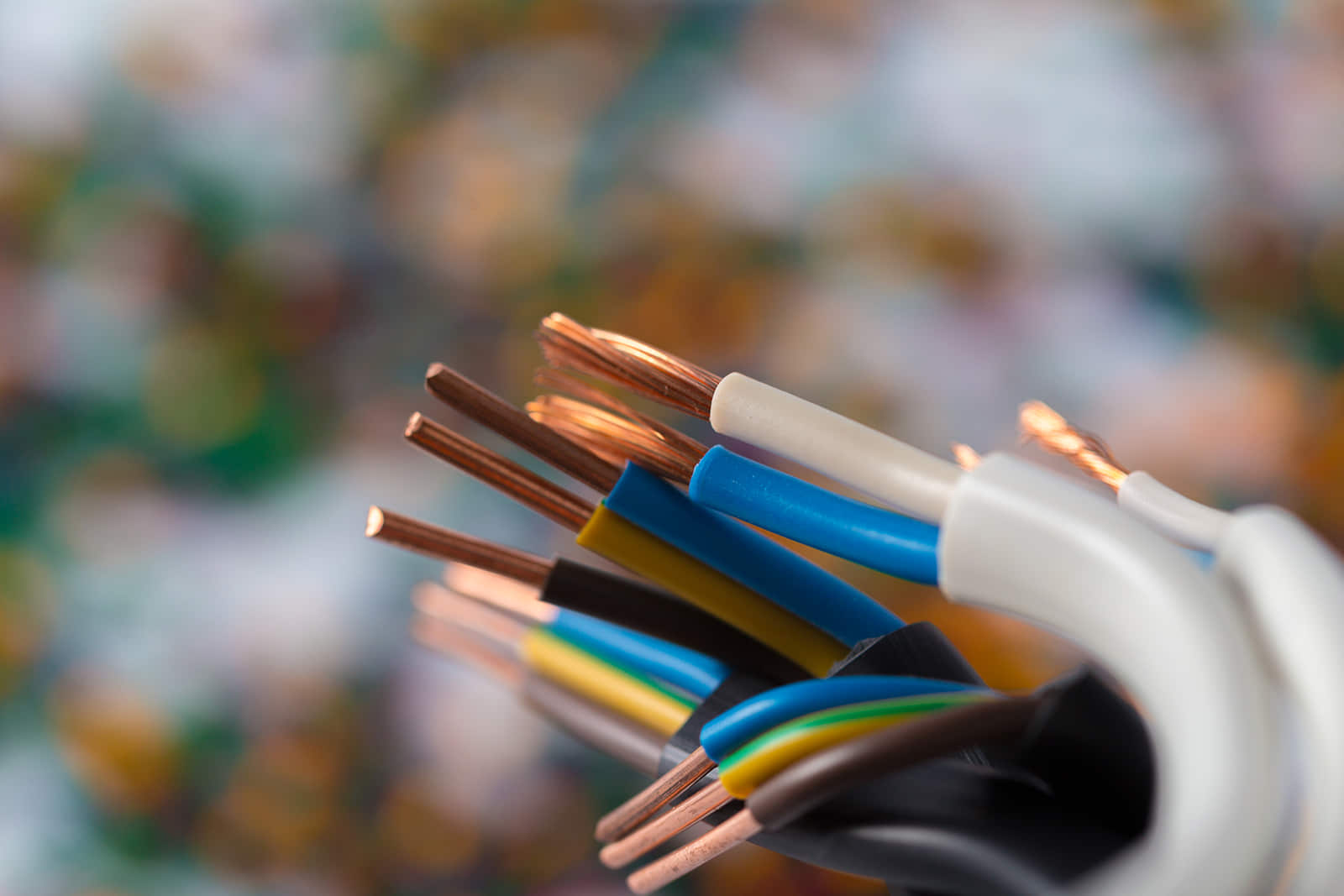
To select the appropriate wire gauge, calculations based on the specific situation are necessary. The cable cross-sectional area can be calculated using the formula:
Cable Cross-sectional Area (mm²) = (Luminaire Power (W) ÷ Voltage (V)) ÷ Line Current Density (A/mm²)
In general, sports lighting installations require thicker wire gauges to meet the high power demands of the lighting fixtures and the requirement for long-distance transmission. Factors such as line resistance, heat loss, and voltage drop should also be considered. The voltage drop should not exceed 2% according to the AGC standard, as it can lead to increased power load.
The specific wire gauge size needs to be calculated and determined based on the actual circumstances. Additionally, different countries and regions may have varying standards and regulations regarding wire gauges. It is important to consider and adhere to the local standards and regulations when making the selection.
The high voltage input scheme for LED lighting systems refers to the process of increasing the input voltage from the AC power supply to a higher voltage level. This elevated voltage is then reduced to an appropriate range using a power controller before being supplied to the LED luminaires. Currently, AGC's sports lighting fixtures can be configured with a high voltage input scheme to meet project requirements.
High voltage AC input allows each wire to carry a larger number of luminaires, thereby saving project construction costs and improving installation efficiency. Additionally, high voltage power conversion achieves higher efficiency, resulting in improved lighting efficacy of the luminaires.
Using a high voltage input scheme reduces the flow of current, thereby reducing line losses, line resistance, and heat dissipation. Simultaneously, it simplifies the design of power controllers, reducing system costs and complexity.
The high voltage input scheme minimizes the flow of current, thereby reducing line losses and voltage fluctuations. This, in turn, improves system stability and reliability.
The high voltage input scheme reduces the flow of current, line resistance, and heat dissipation, thereby reducing the risks of line faults and fires. This enhances the overall safety of the system.
Since the driver box is often the main failure point for LED lighting products, we recommend using separated driver box installation during installation for easier future maintenance. Separated driver box installation refers to installing the driver of the LED lighting system separately from the LED luminaire itself, with the power supply and luminaire installed separately and connected via wiring.
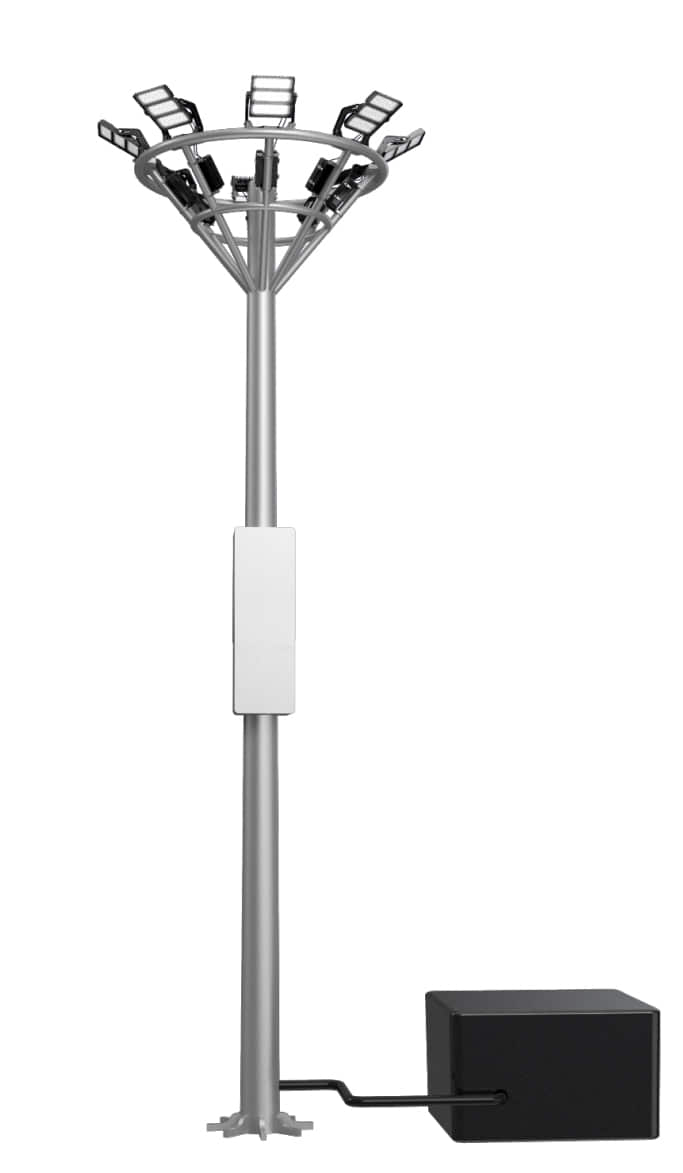
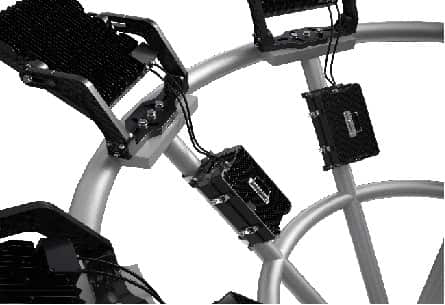
Generally speaking, separated driver installation can be divided into two methods:
Remote Installation: Install the driver box far away from the LED luminaire, and connect the power supply and luminaire via cables. This method can reduce the volume and weight of the luminaire for easier installation and maintenance.
Centralized Installation: Install the drivers for multiple luminaires together in one location, and connect the power supplies to the luminaires via cables. This method can reduce system costs and installation and maintenance difficulties.
DMX (Digital Multiplex) and DALI (Digital Addressable Lighting Interface) are two common dimming control methods used for stadium lighting. Both utilize automated control to save energy by dimming the lights when not needed at full brightness. Let's look at what these two dimming methods are.
Digital Multiplex (DMX) is a centralized lighting control system, meaning all fixtures are controlled by one central control panel, with the ability to control up to 512 fixtures. DMX systems utilize multiple connectors with RS485 or RS422 communication protocols to ensure more lights and fixtures can be installed and connected at each node.
DMX is commonly used with RGB/RGBW fixtures, allowing instant color changes through the DMX system. It is one of the premier, high-quality systems used in many applications, especially the sports industry.

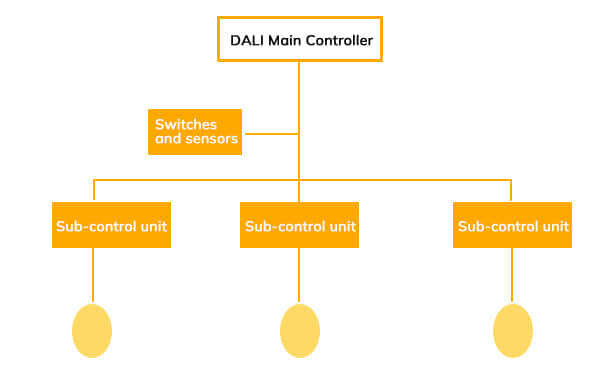
Digital Addressable Lighting Interface (DALI) is a two-way open protocol that utilizes multiple control panels connected to multiple fixtures.
Unlike the centralized DMX control panel, DALI is a decentralized system. Each control panel adjusts individually to make lights brighter or dimmer.
DALI control systems can control up to 64 lights with around 254 brightness settings. In addition to dimming and on/off operation, preset modes can be used to change lighting patterns at specific times of the day.
Coverage Distance: One similarity between the two control systems is the maximum distance they can cover. Both systems can cover up to 300 meters from the central controller.
Control Panels: Both systems utilize control panels to send commands to fixtures to increase or decrease brightness. Operation speeds may vary depending on wiring, but both heavily rely on control panels.
Applications: DMX and DALI lighting controls can be used for similar applications such as sports stadiums, highways, airports, bridges, etc.
| DMX | DALI | |
|---|---|---|
| Speed | Fast speed control system | Slow speed control system |
| Number of connections |
Maximum 512 connections | Maximum 64 connections |
| Color control | Centralized control system | Decentralized control system |
| Type of contro | Lighting fixture using the specialized RGB/RGBW LED,you can change the color via DMX system |
It does not support color change; only fading of the lights |
| Cable requirement | lt requires a Cat-5 cable requirement which is also attributed to its fast speeds |
It uses a two-wire connection setup |
| Automatic requirement | Cannot perform automatic addressing | Can perform automatic addressing |
| Dimming control | Easy to use | A bit complex and might require some training before use |
Different stadiums require different lighting options. The ultimate goal is to ensure a good experience for both athletes and spectators, with lighting that does not distract them in any way.
For general lighting and energy savings purposes, DALI is more commonly used. In addition to dimming and on/off functions, DALI systems can also use preset modes to change lighting patterns at specific times of the day. DALI may be preferable for smaller stadiums/courts with poles, where the area is easier to control lights individually.
DMX lighting control is best for enhancing the spectator experience. With its fast switching speeds, stunning effects, and instant color changes, DMX can also be synchronized with music for added entertainment.
Both lighting controls are great options for sports venues. Some stadiums integrate both control systems in different areas of the venue based on lighting needs - typically DALI for exterior control and DMX for interior arena control.
Football is one of the most popular sports and entertainment activities in the world, especially in Europe, South America and Latin America. For many, watching live broadcasts of matches has become a major evening pastime, not just a sport. Football lighting effects are crucial for both footballers and spectators' direct experiences. Currently, the replacement rate of LED sport lights is not high, and there is considerable potential in the sports lighting market. Many different factors play a decisive role in successful football stadium lighting.
AGC already has some football stadium lighting experience, having provided lighting solutions for UEFA stadiums, and will continue to invest heavily in R&D in the sports lighting field, developing more professional sport lighting products to become your preferred professional partner when selecting and installing lighting systems.
